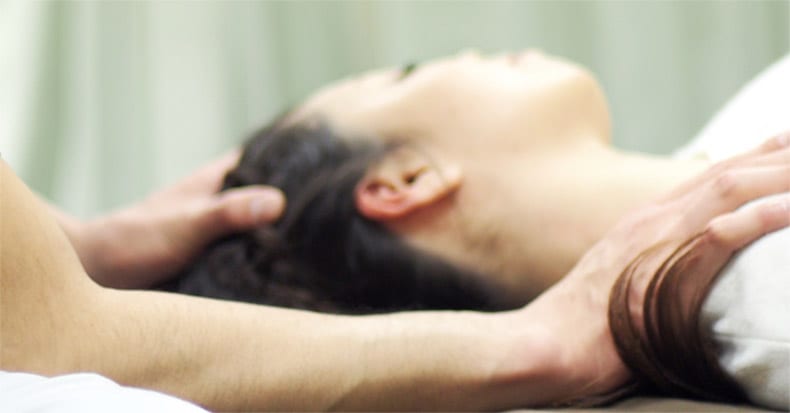The Latin terms tortus means twisted and collum means neck, hence the name torticollis. The common name for torticollis is wry neck, which is a dystonic condition defined by an abnormal, asymmetric position of the head and neck.
Congenital torticollis is the most common form of this condition, which is present at birth (incidence rate is 0.3-2.0%). The cause is unclear, but it is most likely the result of birth trauma and/or intrauterine faulty positioning pre-delivery. In a typical presentation of torticollis, damage to the sternocleidomastoid (SCM) muscle that attaches between the sternum and clavicle to the mastoid process behind the ear causes the head to extend back and sideways and rotate to the opposite side.
Congenital torticollis is diagnosed in the first one to four weeks of age and sometimes a firm mass in the SCM muscle can be seen on an ultrasound or even felt by hand. Treatment should commence promptly. Chiropractic treatment initially includes manual therapies such as stretching of the SCM, mobilization, and/or gentle manipulation of the cervical spine. Manual traction and microcurrent and/or ultrasound diathermy have been found to be helpful as well.
Teaching parents/care givers how to stretch the SCM and how to position the baby to reduce the altered posture is very important. Other helpful tips include: adding neck supports to a car seat; using toys, lights and/or sounds to encourage the child to look in the corrective direction; placing the infant in the crib with the affected side by the wall so they must turn to the non-affected side to face out; and lying prone (stomach first) with the affected side down.
It is reported that about 5-10% of cases fail to respond and may require surgery to release the muscle. The good news is that the vast majority of cases of congenital torticollis resolve with conservative care.



